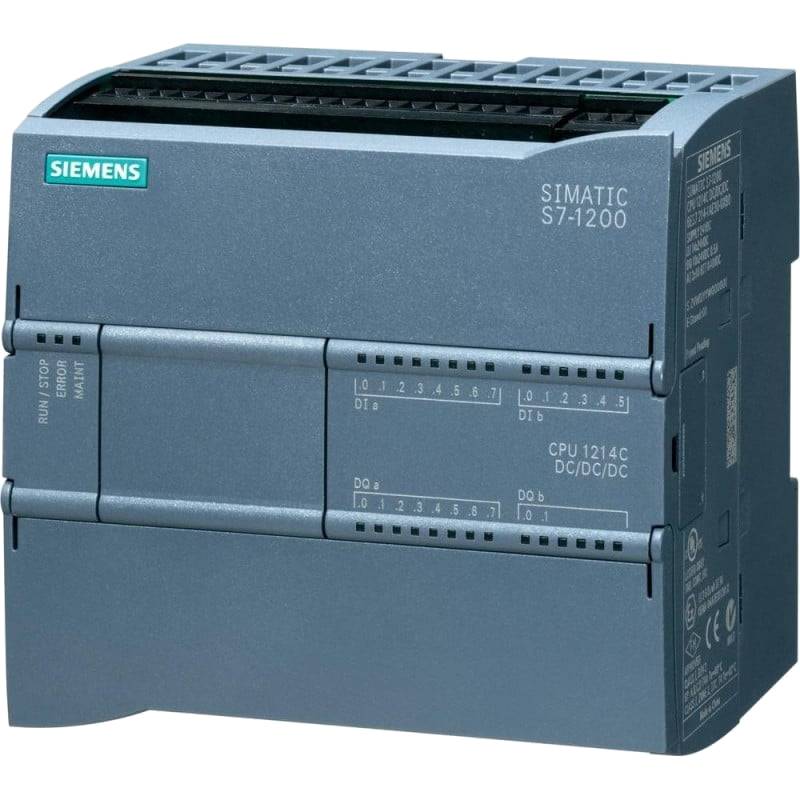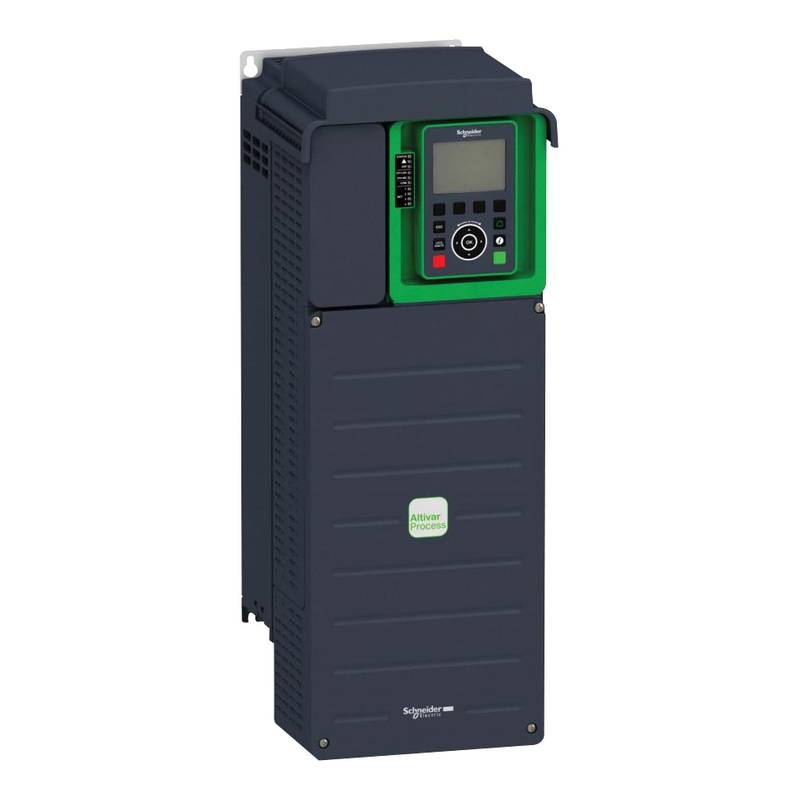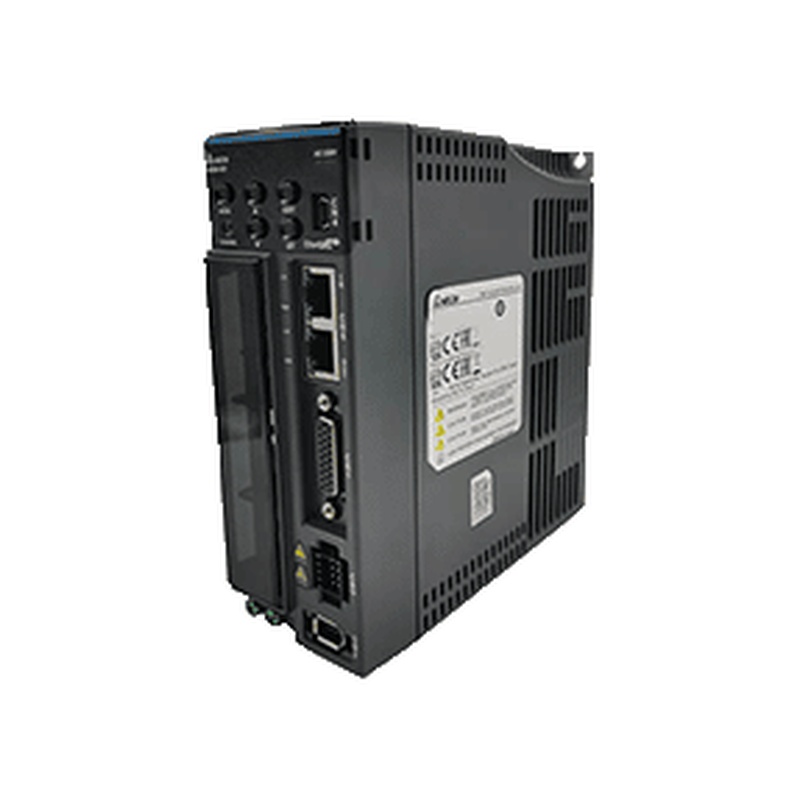
The Siemens 5SU1656-1KK16 RCCB is a high-performance Residual Current Circuit Breaker designed for robust protection against earth leakage faults in demanding industrial and commercial environments. This 16A, 300mA, 1-pole + neutral device offers superior safety and reliability, featuring a Type C tripping characteristic for predictable response to overcurrents. Its advanced design ensures swift disconnection, minimizing the risk of electrical fires and protecting both personnel and equipment from dangerous residual currents. The Siemens 5SU1656-1KK16 RCCB stands out for its compact form factor and straightforward integration into existing electrical installations, making it a preferred choice for safeguarding critical circuits.
Siemens 5SU1656-1KK16 RCCB: Product Specifications
| Parameter | Specification |
| :---------------------- | :--------------------------------------------- |
| Product Type | Residual Current Circuit Breaker (RCCB) |
| Manufacturer | Siemens |
| Model Number | 5SU1656-1KK16 |
| Rated Current (In) | 16 A |
| Rated Residual Current | 300 mA |
| Number of Poles | 1P+N (1 Pole + Neutral) |
| Tripping Characteristic | Type C |
| Rated Voltage (Ue) | 230 V AC |
| Frequency | 50/60 Hz |
| Breaking Capacity (Icn) | 6 kA |
| Terminal Type | Screw Terminals |
| Protection Class | IP20 (device body), IP40 (installed in enclosure) |
| Mounting Type | DIN Rail (35 mm) |
| Ambient Temperature | -25 °C to +45 °C |
| Certifications | VDE, CE |
Core Features & Market Positioning
The Siemens 5SU1656-1KK16 RCCB distinguishes itself through its robust construction and adherence to stringent international safety standards, including VDE and CE certifications. Its Type C tripping curve is a critical differentiator, designed to handle inrush currents from inductive loads without nuisance tripping, a common issue with standard Type B breakers. This makes it exceptionally well-suited for industrial applications where motors, transformers, and other equipment are prevalent. The 300mA residual current sensitivity provides a high level of protection against indirect contact, aligning with industrial safety regulations and mitigating severe risks. Positioned as a reliable and durable solution, this RCCB offers a compelling balance of advanced protection and operational stability, making it a cost-effective choice for long-term electrical safety investments.
Key Application Scenarios
This Siemens 5SU1656-1KK16 RCCB is ideally suited for protecting circuits in environments prone to inductive loads and requiring stringent safety measures. Common applications include motor control circuits in manufacturing plants, power distribution panels for commercial buildings, and protection for lighting systems with high inrush current demands. Its 16A rating and 300mA sensitivity make it perfect for safeguarding individual machine circuits or sub-distribution boards where the risk of earth faults is significant, such as in workshops, data centers, and areas with complex machinery. The 1P+N configuration ensures comprehensive protection for single-phase circuits with a neutral conductor.
Practical System Integration Guidance
Integrating the Siemens 5SU1656-1KK16 RCCB is a straightforward process for trained electricians. The device mounts directly onto a standard 35mm DIN rail, facilitating quick installation in distribution boards and enclosures. Wiring is performed via robust screw terminals, accommodating conductors up to 16mm² for line and neutral. Ensure proper isolation of the power supply before commencing any electrical work. Connect the incoming live and neutral conductors to the designated input terminals and the outgoing protected circuit conductors to the output terminals. For optimal safety and performance, always adhere to local electrical codes and manufacturer guidelines, ensuring adequate clearance and ventilation around the installed device.
Operation and Risk Mitigation
The Siemens 5SU1656-1KK16 operates by continuously monitoring the balance of current flowing through the live and neutral conductors. Should an imbalance, indicative of an earth leakage fault, exceed 300mA, the RCCB will instantaneously trip, disconnecting the power supply. This rapid response is crucial for preventing electric shock hazards and mitigating the risk of fire caused by arcing faults to earth. Regular testing of the RCCB's functionality using its integrated test button is recommended to ensure continued operational integrity. In the event of persistent tripping, a thorough inspection of the protected circuit for insulation faults or equipment malfunctions is advised.
Scalability & Long-Term Value
While the Siemens 5SU1656-1KK16 is a dedicated protective device, its value extends through compatibility with Siemens' broader industrial electrical components and systems. It seamlessly integrates into standard modular switchgear assemblies, allowing for straightforward expansion or replacement within existing infrastructure. For facilities undergoing digital transformation, this RCCB can be part of a protected distribution system that interfaces with smart monitoring solutions, offering future potential for remote status indication and advanced diagnostics as part of an IIoT strategy. Its robust design ensures a long service life, minimizing the need for frequent replacements and contributing to overall operational cost savings.
Frequently Asked Questions (FAQs)
1. What is the primary function of the Siemens 5SU1656-1KK16 RCCB?
The Siemens 5SU1656-1KK16 RCCB is designed to provide essential protection against earth leakage faults. Its main purpose is to detect imbalances in current flow and quickly disconnect power to prevent electric shock hazards. This safety feature is critical for personnel protection in industrial and commercial settings.
This device safeguards equipment from damage caused by insulation failures or accidental contact with live parts. It operates by sensing residual current, tripping when it exceeds a dangerous threshold, thereby preventing potential fires and electrical accidents. The 16A rating signifies its capacity for circuits with moderate power demands.
The 300mA sensitivity level is optimized for protecting against indirect contact, offering a higher degree of safety than standard 500mA residual current devices. Its 1-pole + neutral configuration ensures complete circuit isolation when a fault occurs.
2. What does "16A 300mA 1P+N C" signify in the Siemens 5SU1656-1KK16 product code?
"16A" indicates the maximum continuous current the breaker can safely handle without tripping due to overload. This rating is suitable for many circuits in industrial and commercial applications. It defines the operational current capacity.
"300mA" refers to the residual current sensitivity. This is the minimum leakage current that will cause the RCCB to trip, offering enhanced protection against electric shock. A lower mA value means greater sensitivity and safety.
"1P+N" signifies that the breaker protects one live pole and the neutral conductor, offering full isolation. The "C" denotes a Type C tripping characteristic, suitable for circuits with moderate inrush currents like motors.
3. Where is the Siemens 5SU1656-1KK16 RCCB typically installed?
This RCCB is commonly installed in main distribution boards and sub-distribution panels within industrial facilities. It is also frequently used in commercial buildings, workshops, and data centers to protect specific circuits. Its DIN rail mounting makes it adaptable to various enclosure types.
The device provides crucial protection for circuits feeding machinery, motor control centers, and lighting systems. Its 300mA sensitivity makes it ideal for areas where personnel may come into contact with electrically energized equipment indirectly. It ensures compliance with safety regulations.
Installation requires a standard 35mm DIN rail. Proper electrical connections should be made to the input and output terminals, ensuring the live and neutral conductors are correctly routed for effective fault detection and interruption.
4. What is the significance of the Type C tripping characteristic on this RCCB?
A Type C tripping characteristic means the breaker is designed to withstand higher inrush currents without tripping prematurely. This is essential for circuits powering inductive loads such as motors, transformers, and lighting ballasts. These devices experience a temporary surge of current upon startup.
This feature prevents nuisance tripping, which can occur with standard Type B breakers when equipment is switched on. By allowing for these short-duration, high-current surges, the Type C characteristic ensures stable operation of machinery and connected equipment. It maintains operational continuity.
The Siemens 5SU1656-1KK16's Type C curve provides reliable overcurrent protection while accommodating the specific electrical demands of industrial applications. It balances sensitive fault detection with the practicalities of motor and equipment startup sequences.
5. How does the Siemens 5SU1656-1KK16 protect against electric shock?
The RCCB constantly monitors the current flowing in the live and neutral conductors. If an imbalance occurs, indicating that current is leaking to earth through a person or faulty equipment, it triggers the breaker. This rapid disconnection prevents dangerous current flow through the body.
When a leakage fault is detected, the 300mA sensitivity ensures a very quick trip response. This speed is critical, as even small amounts of current flowing for extended periods can be lethal. The device interrupts the circuit within milliseconds of detecting the fault.
By ensuring the circuit is de-energized almost instantaneously upon detecting a leakage path, the Siemens 5SU1656-1KK16 significantly reduces the risk and severity of electric shock. It provides a vital layer of personal safety in environments where electrical faults are a concern.
6. Can the Siemens 5SU1656-1KK16 be used for overload protection as well as earth leakage?
While primarily designed for earth leakage protection, the Siemens 5SU1656-1KK16, like all circuit breakers, offers a degree of overload protection. Its 16A rating means it will trip if the circuit consistently draws more than this current. This is a secondary protective function.
However, for robust and primary overload protection, it is recommended to use dedicated miniature circuit breakers (MCBs) with appropriate thermal and magnetic tripping characteristics alongside the RCCB. The RCCB's main focus is fault current detection.
The combination of an MCB for overload and an RCCB for earth leakage provides comprehensive circuit protection. This setup ensures safety against both overcurrent conditions and dangerous residual currents.
7. What are the typical wiring requirements for installing this RCCB?
The Siemens 5SU1656-1KK16 features screw terminals designed for secure connections. It is equipped to accept conductors of a certain size, typically up to 16mm² for the main power connections. Always refer to the product's manual for precise conductor sizing.
Proper installation involves connecting the incoming live and neutral conductors from the power source to the designated input terminals. The outgoing conductors for the protected circuit should then be connected to the corresponding output terminals. Correct polarity is crucial.
It is vital to ensure all connections are tight and secure to prevent overheating and maintain electrical integrity. The device mounts on a standard 35mm DIN rail within an appropriate electrical enclosure.
8. How often should the test button on the Siemens 5SU1656-1KK16 be used?
The integrated test button allows for periodic verification of the RCCB's tripping mechanism and circuitry. It is recommended to test the device regularly, typically once every month or as per local electrical safety regulations. This ensures it remains functional.
Pressing the test button simulates an earth leakage fault, causing the RCCB to trip. If it does not trip, or trips intermittently, it indicates a potential fault with the device itself and it should be replaced immediately. Consistent testing is key to reliability.
This simple test procedure is a critical part of maintaining electrical safety. It provides assurance that the residual current detection and interruption functions are operational and ready to respond to a real fault.
9. What is the breaking capacity (kA) of this Siemens RCCB, and why is it important?
The Siemens 5SU1656-1KK16 has a breaking capacity of 6 kA. This refers to the maximum fault current the device can safely interrupt without sustaining damage. It's a crucial safety parameter that ensures the breaker can handle short-circuit events.
A higher breaking capacity is essential in areas where the potential for large fault currents exists, such as near the main power source or in systems with high fault levels. It prevents catastrophic failure of the device during a severe short circuit.
Ensuring the breaking capacity of the RCCB (and other protective devices) is adequate for the system's prospective fault current is a fundamental aspect of electrical design and safety. It guarantees that the breaker will operate reliably when needed most.
10. Is the Siemens 5SU1656-1KK16 compatible with other Siemens electrical components?
Yes, the Siemens 5SU1656-1KK16 is designed to be highly compatible with other Siemens modular DIN rail components. This includes miniature circuit breakers (MCBs), surge protective devices (SPDs), and various contactors. It fits seamlessly into standard Siemens distribution systems.
Its modular design, adhering to common industry standards, also allows for integration into electrical panels built with components from other reputable manufacturers. However, for optimal performance and guaranteed compatibility, using components from the same manufacturer is often preferred.
This compatibility simplifies system design, installation, and maintenance, allowing for scalable and interconnected electrical solutions. It ensures that protective devices work harmoniously within a complete electrical system.

























